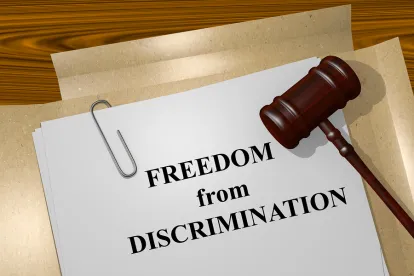Last month, a jury in Texas delivered a stunning $70 million verdict in favor of 10 employees who worked for Glow Networks. Nine of the ten plaintiffs were Black employees. The case, Yarbrough, et al. v. Glow Networks, Inc., is a potent reminder about the continuing effects of employment discrimination as well as the legal remedies that exist to combat unequal treatment and retaliation at work.
The plaintiffs are represented by The Sanford Firm.
The defendants are represented by Ford & Harrison.
Background Of The Case
The employees filed their lawsuit against Glow Networks in a Texas federal court in December 2019 (Civil No. 4:19-cv-00905, E.D. Tex. 2019). According to their complaint, numerous Black employees faced continuing race discrimination at work, including promotion denials, unequal pay, and a hostile work environment.
At trial, the employees sought only compensatory/emotional distress damages and punitive damages in the lawsuit and did not seek lost pay damages. For this reason, their decision to proceed solely under 42 U.S.C. 1981 (Section 1981) rather than including a claim under Title VII of the 1964 Civil Rights Act (Title VII) was particularly important and will be discussed in more detail below.
Ultimately, the jury determined that the employees had proved that Glow Networks had subjected them to unlawful discrimination and retaliation at work. This discrimination and retaliation included demotions, promotion denials, and getting fired or laid off.
Notably, the jury then awarded each plaintiff $3 million in emotional distress damages and $4 million in punitive damages, which are designed to punish employers in particularly egregious cases of employment discrimination. The total award to the 10 employees thus equaled $70 million (this amount does not include any attorneys’ fees and trial expenses that the court may later order the company to pay.
Glow Networks will have an opportunity to appeal the jury verdict if it chooses to do soDifferences Between Section 1981 And Title VII Race Discrimination Claims
Differences Between Section 1981 And Title VII Race Discrimination Claims
On a broader level, both Section 1981 and Title VII outlaw employment discrimination based on race. In the Yarbrough case, the employees filed their case under Section 1981 instead of Title VII. This choice paid off handsomely as a key difference between these two employment discrimination laws is that Title VII caps the maximum amount that a plaintiff can receive for compensatory and punitive damages at $300,000. Title VII’s cap would thus result in a maximum jury verdict of $3,000,000 for these 10 plaintiffs. Section 1981, however, has no cap on compensatory and punitive damages, which resulted in a $70 million verdict, an eye-popping $67 million more than could have been awarded under Title VII.
Other distinctions between Title VII and Section 1981 exist, including:
Title VII outlaws disparate impact discrimination but Section 1981 does not
Both statutes prohibit intentional discrimination in employment based on race. But Title VII also prohibits using hiring practices that are neutral on their face (such as written tests), which have a discriminatory outcome: disproportionately excluding female, African-American, and other protected classes of applicants.
Under the disparate impact theory, even if the employer did not intend for an employment practice to exclude protected groups, if the practice ultimately has the effect of rejecting an excessive number of otherwise qualified, for example, female or African-American applicants, then using the practice might violate Title VII.
Section 1981, on the other hand, outlaws only intentional discrimination.
Section 1981 does not require the employee to file an EEOC charge
To file a Title VII lawsuit in court, an employee must fist have exhausted their administrative remedies by filing a charge of discrimination with the Equal Employment Opportunity Commission (EEOC). Depending on which state the employee works in, the time period can be either 180 or 300 days to file the charge if the employee works in the private sector. Different procedures and time periods apply if the employee works for the federal, state, or local government.
Section 1981, however, does not require an employee to file a charge of discrimination with the EEOC. This distinction is particularly important if the employee has missed the deadline to file an EEOC charge of discrimination because the employee may still be able to assert a claim under Section 1981.
Section 1981 has a longer statute of limitations than Title VII
As noted above, the deadline for filing an EEOC charge of discrimination can be up to 300 days, depending on where you work and whether you are in the public or private sector. Also, a Title VII lawsuit must generally be filed within 90 days after the EEOC’s Right to Sue Notice is received.
Claims asserted under Section 1981 though have a significantly longer statute of limitations for filing a lawsuit. Indeed, an employee may file a Section 1981 within four years of the violation. Jones v. R.R. Donnelley & Sons Co., 541 U.S. 369 (2004).
Section 1981 applies only to race discrimination while Title VII covers more classes of people
Section 1981 provides several additional benefits not contained in Title VII, but in at least one area–scope of protected classes–Title VII offers broader coverage.
Section 1981 covers discrimination based only on race or ethnicity.
Title VII covers discrimination based not only on an employee’s race and ethnicity, but also protects against discrimination related to, for example, sex, religion, sexual orientation, and gender identity.
The Yarbrough jury verdict highlights the work that remains to be done to eradicate employment discrimination, but also the promise that laws like Section 1981 and Title VII can provide a powerful weapon to improve workplaces for everyone. As one of the lawyers for the employees, Brian Sanford, told BET about the jury verdict, “[t]hey were sending the message,” he said. “Don’t do this in the 21st century. Stop.”




 />i
/>i

